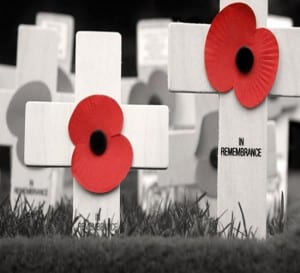 It’s likely no one needs reminding that 2014 was the centenary of the outbreak of World War I. This anniversary led to a flood of books on the subject with two that seemed to be consistent winners in the reviewers’ eyes: The War that Ended Peace by Margaret Macmillan and The Sleepwalkers by Christopher Clark.
It’s likely no one needs reminding that 2014 was the centenary of the outbreak of World War I. This anniversary led to a flood of books on the subject with two that seemed to be consistent winners in the reviewers’ eyes: The War that Ended Peace by Margaret Macmillan and The Sleepwalkers by Christopher Clark.
‘The Sleepwalkers’ is next on my reading list, but I can certainly highly recommend ‘The War that Ended Peace’. One of the most fascinating elements of the book (plot spoiler) is the extent to which policymakers on all sides of Europe misread the signs that this war would be different from any that preceded it. I say misread because, contrary to many perceptions that they had no idea, almost all parties to the war had noted the clear warning signs.
For example, advances in machine guns meant that heroism or large numbers of troops were unlikely to be decisive factors in any particular battle. Similarly, infrastructure developments like railway networks have changed the speed at which troops can be mobilised and changed the nature of supply chains. And networks of competing alliances made it likely that any war would be multilateral – not simply between two sides.
Marketing Lessons From Military Strategies
Sir Edward Grey’s famous quote “The lamps are going out all over Europe, we shall not see them lit again in our lifetime” shows that many knew this was a risk. Most nations had even noted these changes in what we would now call the PESTEL (or opportunities and threats) analysis of their military planning. But their belief that war meant ‘offensive’ action – and indeed the preference of military planners for offensive strategies – created curious blindness to these realities.
had even noted these changes in what we would now call the PESTEL (or opportunities and threats) analysis of their military planning. But their belief that war meant ‘offensive’ action – and indeed the preference of military planners for offensive strategies – created curious blindness to these realities.
Almost all military planning and exercises worked on the principle of a short sharp war of aggression, lasting at most 3 months. So when that wasn’t what happened on the ground almost no one knew what to do, nor did they recognise what was happening until the war had become so devastating that no one was prepared to admit defeat. So was launched a war that cost at least 10 million lives, globalized conflict, destroyed Europe’s economies, and sowed the seeds for an even more cataclysmic conflict within 20 years.
This curious blindness is something that we see in tourism as well. We see a wave of technological change around us on a truly momentous scale. Study after study shows that the proportion of travellers who want to transact digitally is growing and that the real and virtual worlds are now virtually one for many people. But we tell ourselves that ‘our ‘ customers still prefer to interact by phone or in person.
As An Industry, We Need To Adapt To Change and Face Challenges
We see this technology change influence travellers’ expectations in areas like real-time booking or free wifi, but we still see less than half of all tourism businesses in an advanced economy like Australia don’t allow real-time booking on their website, whilst the American hotel industry is petitioning legislators to block travellers using their phone at a conference.
We have strong evidence that climate change is creating challenges in terms of increasingly frequent extreme weather events and rising sea temperatures. These are existential threats to our businesses and our industry (think about an Australian tourism industry with no Great Barrier Reef or no koalas – or a beachfront property that suddenly has no beach!). But when CSIRO presented its Climate Futures Adaption tool (designed to help businesses plan for and mitigate these effects) at the ARTN Conference in 2012, the general consensus was that it was ‘too hard’ to plan for this alongside more everyday concerns.
How to create effective strategic planning in tourism?
- Check the links between the different parts of your strategy document. Have you noted something in your analysis of the external operating environment that you don’t have a plan to address? If so, address this weakness.
Include a broader range of evidence in your planning. We all tend to give greater weight to evidence that supports what we already think. That’s in the nature of humans – we have what behavioural psychologists call confirmation bias. But as the history of World War, I shows that can be a dangerous flaw in our psychology. So try to assemble at least 3 times as many pieces of contradictory evidence for everything as you do positive and critically assess that evidence. How strong or weak is it relative to the evidence that favours what you think?
- Invite a more diverse range of people to critique your plans. Groupthink is also a natural human tendency – we evolved as social animals and overall it’s been a benefit to us. But it also prevents us from spotting really big risks or errors. In early 2008, I sat in a strategy session for my then-employer and asked what our plans were for the next recession. To me, there were clear signs that the global economy was overheating. I was shut down because there was ‘no evidence of a problem’. Within 10 months, the world teetered on the edge of a crisis as mammoth as the Great Depression. It turns out we didn’t have a plan, so we ended up making 20 people redundant only to have to spend time and money hiring and training new people within 12 months when it became clear that China’s growth and Australia’s natural resources meant that we would dodge that bullet. So hear out your contrarians and try asking yourself what you do if the dissenting views were correct. A study by McKinsey shows that this is one of four factors that explain 89% of the difference between the top and bottom-performing companies globally.
- If it’s a new initiative or major change for your business, conduct a ‘pre-mortem’ Gather that diverse group in a room and imagine the initiative has been a disaster – where did it go wrong? What assumptions proved incorrect? Doing this will really help stress test the underlying weaknesses in any plan – and thus help you to address them.
- Have an exit strategy for the most alarming scenarios that could hit your business. Even if you think they are unlikely, what would you do if they happened? This doesn’t have to be as detailed as for the situations you think you are more likely to encounter but well worth trying (and trying to make it is as detailed as you can).
A few of these actions might have led to a very different outcome in that fatal summer of 1914. They are also good lessons in the everyday battle to succeed as a tourism business.
So ask yourself if you are asking the right questions in your strategic planning. Speaking of planning, we have also written a piece of content about market research for tourism that you might find helpful.
Do you want to hear more from us?
Want to be kept up to date with the latest travel and tourism insights? Join Our Mailing List. Every 2 weeks, we send the latest practical insight for you to apply to your business and destination marketing.





Leave a Reply